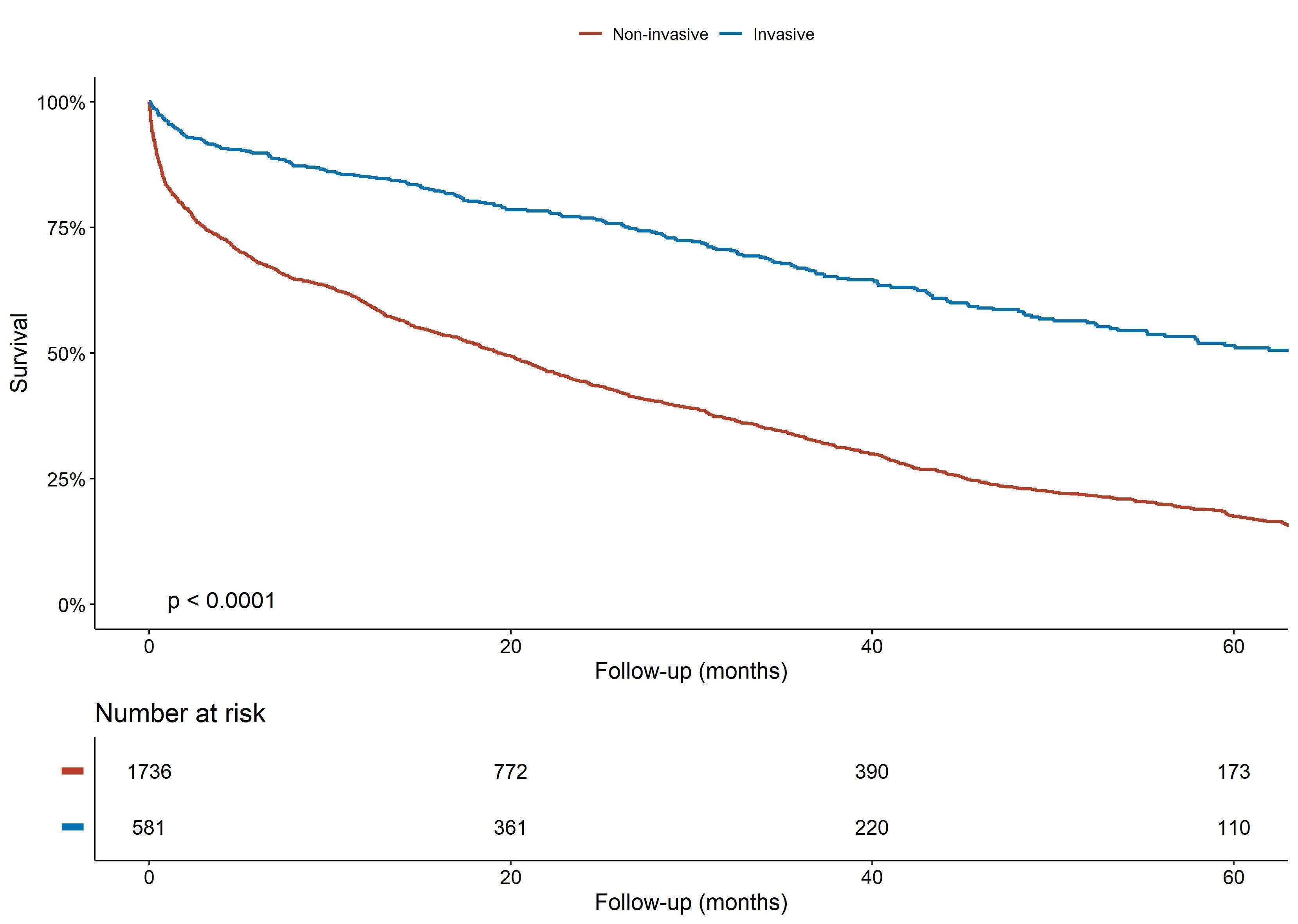
Invasive Management in Elderly (≥80) Patients with Non-ST Elevation Myocardial Infarction is Beneficial Regardless of Frailty Status
2Sackler Faculty of Medicine, Tel Aviv University, Israel
3Internal Medicine D, Sheba Medical Center, Israel
4Internal Medicine B, Sheba Medical Center, Israel
5Medical Corps, Israeli Defense Forces, Israel
6Military Medicine, Hebrew University of Jerusalem Faculty of Medicine, Israel
Introduction: Elderly patients are underrepresented in clinical trials evaluating the management of NSTEMI patients. Moreover, frailty status is often not reported in these trials. Our objective was to evaluate the association of invasive management with outcome among elderly (≥80) patients presenting with NSTEMI by frailty status.
Methods: Retrospective cohort of consecutive elderly patients who were hospitalized with NSTEMI as a primary clinical diagnosis between 2008 to 2019. Primary outcome was all-cause mortality. Frailty status was estimated as a continuous variable as well as categorized to low, medium, and high. Cox regression models were applied with stratification by frailty status. Additional sensitivity analyses were conducted including propensity score matching (PSM) and inverse probability treatment weighting (IPTW) models.
Results: Study population included 2,317 patients with median age of 86 years (IQR 83-90) of whom 1,243 (54%) were men. Patients who were managed invasively (n=581 [25%]) were less likely to be frail (7% vs. 44%, p<.001). During the follow up (median of 19 months, [IQR 4-41]), 1,599 (69%) patients died. Kaplan Meier survival curves (Figure1) show that the cumulative probability of death at 19 months was 50% among patients who were managed conservatively compared with 21% among invasively managed patients (p Log rank <.001). In the multivariable Cox model, invasive approach was associated with a significant 39% decrease in the risk of death (95% CI 0.53-0.71). The benefit of invasive approach was consistent among low, medium, and high frailty subgroups with adjusted HRs of 0.74 [0.58-0.93], 0.65 [0.50-0.85] and 0.52 [0.34-0.78], respectively; p for interaction NS). Results were consistent with PSM and IPTW analyses (HR of 0.6 [0.50-0.71] and 0.67 [0.55-0.82], respectively). Additional sensitivity analysis addressing potential immortal time bias and residual confounding yielded similar results.
Conclusion: Invasive approach is associated with improved survival among elderly patients with NSTEMI irrespective of frailty status.

Powered by Eventact EMS